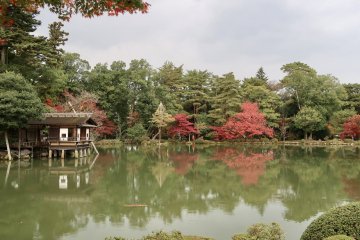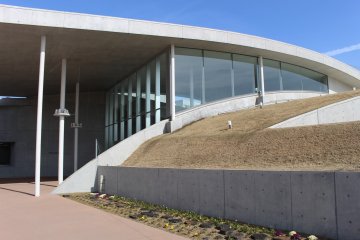A 3-day trip exploring the Japanese Alps. Here's where to go and what to see if you have limited time.
Kanazawa
Kanazawa has a history linked to the Maeda clan, which during the Edo period (1603-1868) made it a thriving cultural and artistic center, developing arts such as Kago Yuzen dyeing and gold leaf craftsmanship. The name Kanazawa means "Golden Marsh"; legend has it that one day, farmer Imohori Togoro was rinsing potatoes in a marsh when he noticed gold dust falling from them. This suggests that Kanazawa was special even before Maeda Toshiie reached the height of his power.
At the end of the 16th century, Maeda Toshiie was appointed daimyo, the highest feudal lord position, governing his domain independently while still under the shogun’s rule. Interestingly, the word "shogun" derives from the Emishi people hunter- gatherers and ancestors of the Ainu, a long persecuted tribe residing in Hokkaido. Legend states that under Emperor Sujin (around 200 B.C.), the title of Seii Tai Shogun "barbarian-suppressing general" was first assigned to four Japanese generals. Centuries later, the samurai revived this title, making it hereditary to establish their military government.
Returning to Maeda, he ordered the construction of a castle, which served as the family’s residence from 1583 until the end of the Edo period.
Kenrokuen Garden: Adjacent to the castle is Kenrokuen Garden, considered one of the three most beautiful gardens in Japan. According to Chinese tradition, the perfect garden should have six essential attributes: spaciousness, intimacy, antiquity, artifices, scenic views, and water features. One of the original buildings houses the Shigure-Tei tea room, where tea ceremonies were once held.
Shirakawa-go
Nestled in a remote valley of Gifu Prefecture lies a magical village still rooted in the past: Shirakawa-go. Despite its wonderful atmosphere, it’s easy to imagine that life here could be difficult, especially in the past. This corner of Japan is known as one of the snowiest places in the country, with an average of 10 meters of snow falling each year. Historically, this land was part of the Hida Prefecture, but after the Meiji Restoration (1868), the area became part of Ono District in Gifu. Not long after, in 1897, Shirakawa-go was established, and it was designated a UNESCO World Heritage site in 1995.
Gassho-zukuri houses: some date back 250 years. The name derives from the distinctive steeply sloped thatched roofs, built to withstand heavy snowfall. The shape resembles the hands clasped in prayer by Buddhist monks, 合掌 gassho, meaning "praying hands," with 造り zukuri being a suffix meaning "constructed." These structures typically have three or four floors and were designed to accommodate multiple families: each floor had a specific function, with some serving as workspaces for artisans. Usually, silkworms were kept on the upper floors, while the ground floor was used for metalworking and other crafts.
Takayama
Nestled in the Japanese Alps of Gifu Prefecture, Takayama is renowned for its well-preserved Edo-period streets, traditional festivals, and rich cultural heritage. Its history dates back to the Jomon period; however, it truly prospered during the Edo era. Its strategic location made it an important center for timber and crafts. During this time, it was directly controlled by the Tokugawa shogunate due to its valuable resources. Takayama was famous for the skill of its carpenters, many of whom were called to Kyoto to work on the imperial palace and city temples. Others were employed in Nara.
Hida Folk Village: A folkloric village founded in 1971, aimed at preserving the memory of the region’s ancient rural lifestyle.
Sanmachi-suji: The historic district featuring old houses from the Edo period, some of which now host artisan shops, while others serve as museums.
Higashiyama Yuhodo: A 3.5 km trail that runs through the city, passing the main temples and leading to the site of the former Takayama castle.







